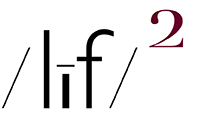reflection ~ Au Sable Forks, NY - in the Adirondack PARK
civilized ku # 4039-40 ~ straight ahead
apples and hose ~ Au Sable Forks, NY - in the Adirondack PARK
dead plant ~ Au Sable Forks, NY - in the Adirondack PARK
what the camera sees (overexposure) # 7 ~ + plus a couple additions
steps
apples and hose
lawn and sidewalk
The first body of work is, as the title of this (and previous) entries suggests, what the camera sees (overexposure). However, in addition to that nomenclature, what is also emerging is a separate body of work which could be titled, what the camera sees (out of focus) - see yesterday's birch tree picture and the apples and hose picture in today's entry.
And then, just to put another pot on the stove, there is my continuing fascination with what could be titled what the camera sees (blown highlights).
In any event, I'll continue putter around and picture away just to see where it all leads.
what the camera sees (overexposure) # 6 / civilized ku # 4038 ~ still messing around
birch tree
birch tree ~ Au Sable Forks, NY - in the Adirondack PARK
Recently encoutered Artsy Bullock: By digitally creating a photograph that is a composite of multiple negatives of the same model in one setting, the self is exposed as not a solidified being in reality, but as a representation of social and interior investigations that happen within the mind.
civilized ku # 4037 ~ dancing eyes
bike and tree / Rist Camp ~ Newcomb, NY - in the Adirondack PARK
I am starting to develop a facsination with multiple blown out highlights. The eye really dances around the 2D surface of a print.
what the camera sees (overexposure) # 5 ~
utility room
candle
picture windows # 70 ~ end of the line
kitchen window / Rist Camp ~ Newcomb, NY - in the Adirondack PARK
Normally, at this time in September, the hills are alive with a blaze of Autumn color which is a very nice climax to our stay at Rist Camp. However, due to a very dry Spring and Summer together with a very mild September (the first frost was last night), the leaves are still on the trees and there are but a few faint hints of muted Autumn reds.
On a related picture making sidebar, while here at Rist Camp, I arranged to have an exhibition of my Life Without the APA work at barVino in North Creek. barVino is a restaurant, wine bar, and live music venue with a rustic chic menu. In addition they exhibit (and sell) art, not merely as decoration, but in a serious gallery manner. Their current exhibition features Danish illustrator Mads Berg's work.
My work will follow Berg's work beginning with an opening reception on Friday, November 4. The exhibition will run through the Thanksgiving and Xmas / New Year holidays.
what the camera sees (overexposure) # 4 ~ formulaic
cat dishes
In the case of what the camera sees, it is not a straight forward proposition. I need to actively look for the elements which I think will work together in order to make a good picture. Quite obviously, my eye does not see what the camera sees using shallow focus and overexposure techniques. Consequently, at this point in the side trip (MO wise) I have a number of misses inasmuch as I have not identified precisely what all of the elements necessary for a good picture of this type are.
Quite obviously, the one absolutely necessary element is an area within the frame of "hot" direct sunlight and in my messing about I have decided that that hot spot seems to work best on the bottom surface of the picture. I have also decided that a corresponding area(s) of darker tonal values is also a necessary element which stands in contast (figuratively and literally) to the hot spot.
Another key element, independent of the light, is that of perspective. So far all of the "successful" pictures have been made with a 12mm (24mm- 35mm equiv.) lens which produces a diminishing perspective POV. All of these pictures are made looking down but I believe that the diminishing perspecive thing will work with any POV - up, down, right angle, etc.
Yet another key element is that there needs to be a narrow zone of sharp focus - or least apparent sharpness relative to the rest of the picture - in order to give the eye somewhere to land.
All of that written, what I am trying to do is to create a formula for making what the camera sees pictures. This idea is very foreign to me inasmuch as my picture making has almost always been of the spontaneous variety. No formula, no rules, no dictates or other considerations while making pictures: just see it and picture it.
Over time, it might be possible to train my eye to see what the camera sees but until that time - if it ever arrives - I will most certainly require the guiding hand of a formulaic approach to making what the camera sees pictures.
Did I mention that I am having fun with this?
